Indian Classical Dance Forms | Facts, Famous Dancers, Origins of Classical Dances of India
Out of many dance forms in India practiced across different regions, eight types of dance forms have been recognized as classical dance forms of India by Sangeet Natak Akademi. Below you will get to know about each Classical dance form in India. Their details are as follows-
List of Classical Dance and State
| Classical Dance | State |
| Tamil Nadu | |
| Uttar Pradesh | |
| Andhra Pradesh | |
| Odisha | |
| Kerala | |
| Assam | |
| Manipur | |
| Kerala |
1. Bharatanatyam
- Bharatanatyam is the oldest dance form of India. It is called the mother of all other styles of classical dance in India.
- Rukmani Devi Arundale and Padma Subrahmanyam are famous Bharatanatyam dancers.
- Its origin is believed to be from Tamil Nadu, and it was earlier also known as Sadir Attam.
- This dance was nurtured by temples and kingdoms of South India since ancient times.
- It expresses South Indian religious themes and spiritual views, particularly Shaivism, Vaishnavism and Shaktism.
- It was banned by the colonial British government in 1910.
- The dress of a Bharatanatyam dancer is similar to the dress of a Tamil Hindu bride.
- Traditional Bharatanatyam performance has seven parts. The set is called Margam. These parts are-
- Alarippu
- Jathiswaram
- Shabdam
- Varanam
- Padam
- Thillana
- Shlokam or Mangalam
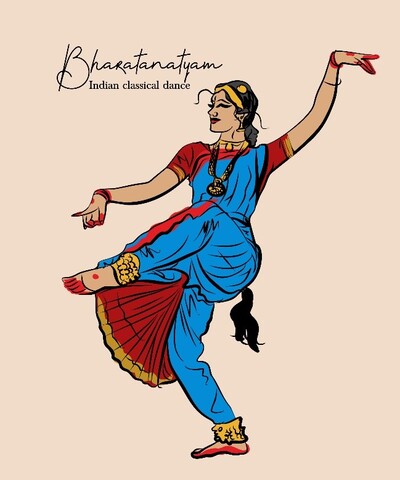
Bharatanatyam Dance form
2. Kathak
- It is one of the eight forms of ancient classical dances of India. It originated from Uttar Pradesh.
- The origin of Kathak is traditionally believed by Kathakars or storytellers in ancient north India.
- Kathak dancers narrate the narrative through hand gestures, extensive footwork and most importantly, facial expressions.
- Kathak performances include Urdu ghazals and commonly use instruments brought during Muslim rule.
- Kathak dance form emphasizes the movement of rhythmic legs and Kathak artists wear ghungroos on the feet.
- The most common musical instrument in Kathak is the tabla. Other instruments like Sarangi, Harmonium and Manjira are also used.
- Jaipur Gharana, Banaras Gharana and Lucknow Gharana are famous schools of Kathak.
- Shambhu Maharaj, Lachhu Maharaj and Sundar Prasad were famous Kathak artists.
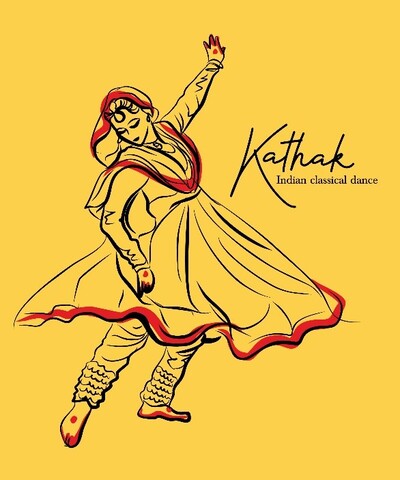
Kathak Dance form
| Related Study Material | |
|---|---|
| Geographical Indication Tag and GI Tagged Products | Styles of Temple Architecture in India |
| List of First in India | UNESCO List of Intangible Cultural Heritage |
3. Kuchipudi
- Kuchipudi is the most popular traditional dance form in South India and its origin is believed to be from Andhra Pradesh.
- Kuchipudi evolved as a Vaishnavism tradition and is most closely related to the Bhagavata Mela.
- Traditional Kuchipudi was performed by a male troupe.
- Typical musical instruments in Kuchipudi are Mridangam, Jhanj, Veena, Bansuri and Tambura.
- Mallika Sarabhai, V. Satyanarayana Sarma, Deepa Shashindran, Usha Srinivasan and Swapna Sundari are the masters of this dance.
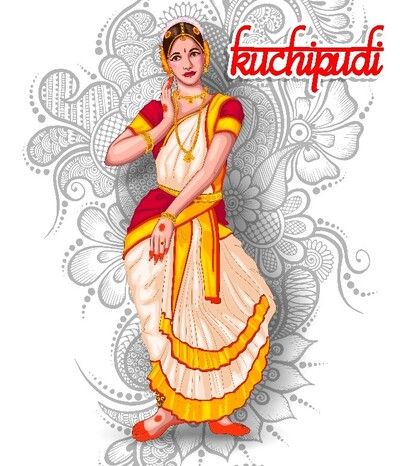
Kuchipudi Dance Form
4. Odissi
- This classical dance originated in Orissa and is traditionally performed in temples.
- Odissi dance expresses Vaishnava themes and other traditions related to the Hindu gods Shiva and Surya.
- Odissi dance is known for its style, independent postures of head, chest and hands, called bhanga. Odissi Tribhanga Asana is particularly famous.
- Odissi dance tradition declined during the Islamic rule and was suppressed under British rule.
- Modern Odyssey is performed by children and adults, singly or as a group.
- Sujatha Mohapatra and Madhavi Mudgal are the masters of this dance.
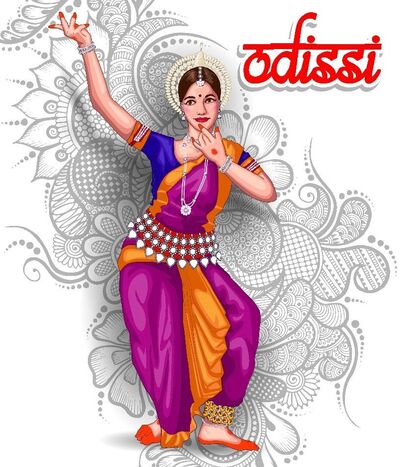
Odissi Dance Form
5. Kathakali
- Kathakali belongs to Kerala.
- In its fully developed form, Kathakali started around the 17th century.
- It is a mixture of dance, music and acting.
- In Kathakali, male actors traditionally wear clothes of female dancers, use elaborately colored make-up, costumes and face masks.
- In Kathakali, stories of the Indian epics are depicted through drama.
- Kalamandalam, Krishnan Nair and Ramanakutty Nair were the masters of this dance.
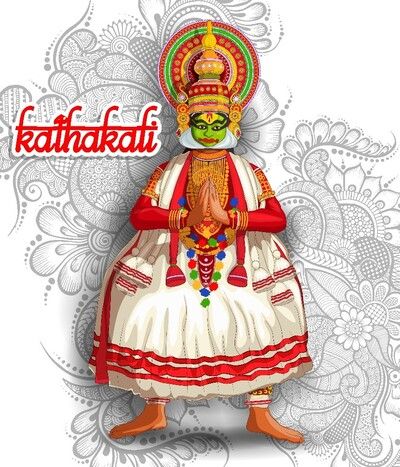
Kathakali Dance Form
6. Sattriya
- Sattriya dance, one of the eight major classical Indian dance traditions, has its origins in Assam.
- It is a dance-drama performance art presented in the Krishna-centric Vaishnavism monasteries of Assam.
- Its origins are believed to be by Srimanta Sankardev. He was a scholar and saint of Bhakti movement of 15th century.
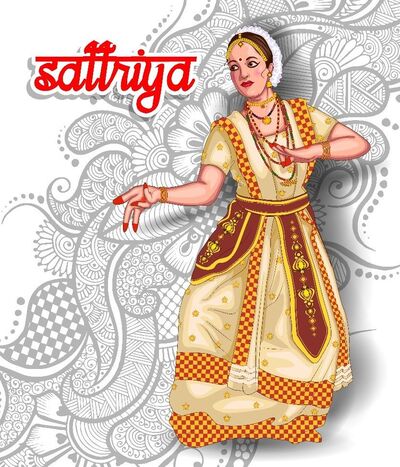
Sattriya Dance Form
7. Manipuri
- Manipuri dance form is one of the major classical dance forms of India; its origins are believed to be from Manipur.
- The theme of Manipuri dance is based on Radha and Krishna's Rasleela.
- Manipuri dance is also known as Jagi.
- This dance is performed during Lai Haroba in Manipur during the worship of regional deities such as Umang Lai.
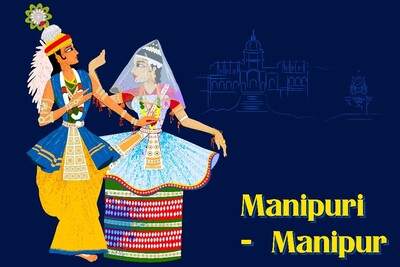
Manipuri Dance Form
8. Mohiniattam or Mohiniyattam
- Mohiniattam is another classical dance form of Kerala and is one of the eight Indian classical dances.
- The word Mohini of Mohiniyattam dance is derived from Mohini, a mythical incarnation of the Hindu god Vishnu, who helps the victory of good over evil by its feminine powers.
- Its dance song is in Manipravalam, a Malayalam-Sanskrit hybrid.
- Bharti Shivaji, Sunanda Nayyar and Mithil Devika are famous Mohiniattam dancers.
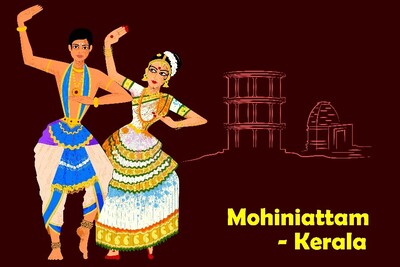
Mohiniattam Dance Form




 Latest
Latest 



Comments